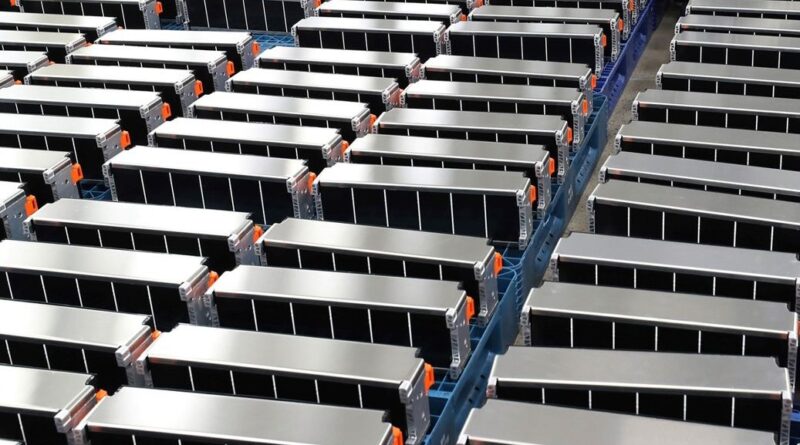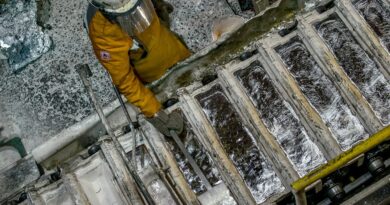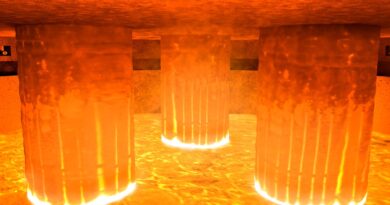Supply crisis of lithium threatens climate goals
The electric car manufacturers are driving unquenchable demand for lithium. But a supply crisis of the wonder metal could dent the world’s chances of meeting its climate goals. Demand has outstripped supply, pushing prices up almost 500% in a year and hindering the world’s most successful effort yet to halt global warming.
The shortage of lithium is so acute that in China, which makes about 80% of the world’s lithium-ion batteries, the government corralled suppliers and manufacturers to demand “a rational return” to lower prices. Analysts at Macquarie Group Ltd. warned of a “a perpetual deficit,” while Citigroup Inc. nearly doubled its price forecast for 2022, saying an “extreme” rally could be coming.
Global investment in EVs has grown faster than any other new-energy sector over the past few years, outstripping even wind and solar power. Current lithium spot prices could add up to $1,000 to the cost of a new vehicle, Benchmark Mineral Intelligence said. Along with higher prices of other raw materials, that is reversing years of falling prices as EVs race to become cost-competitive with gasoline-powered cars. If battery makers can’t get enough lithium, it would curb the expansion of clean-energy vehicles, making it harder to meet global emissions targets.
“It looks like the expansion ramp up is not going to be fast enough to hit demand” over the next three years, said Cameron Perks, an analyst at Benchmark. EV makers “have been asleep at the wheel.”
The crunch prompted a characteristically blunt tweet from Musk in April. “Price of lithium has gone to insane levels!” he posted on Twitter. “Tesla might actually have to get into the mining & refining directly at scale, unless costs improve.”
Lithium, a silvery-white metal, the third-lightest element after hydrogen and helium, is in the throes of an unprecedented boom because a slump in 2018-2020 that halved its value caused chronic underinvestment in new sources of supply just as EV demand was taking off. For battery makers, those woes have been compounded by the pandemic and Russia’s war in Ukraine, which have snarled supplies of other ingredients they need, including nickel, graphite and cobalt.
Tightening supply and higher prices have prompted a flurry of acquisitions and joint ventures as battery makers and automakers try to secure supplies, and unleashed a wave of resource nationalism among governments. As early as last June, Fitch Solutions said lithium had become a “strategic mineral,” and warned of “rising government intervention.”
EVs and batteries drew $271 billion and $7.9 billion of investment respectively in 2021, according to Kwasi Ampofo, head of metals and mining at BloombergNEF. “The upstream part of the value chain has, on the other hand, attracted relatively low investment over the last five years,” he said.
Lithium has taken a long time to hit the mainstream. Discovered in 1817 by Swedish chemist Johan August Arfwedson, it wasn’t produced in quantity until the US government began stockpiling it to make hydrogen bombs in the late 1950s. After the Cold War, production declined until the metal began to be adopted for use in light alloys, coin cells and then mobile phone batteries in the 1990s.
More than half of the global resources are located in the so-called lithium triangle between Argentina, Bolivia and Chile, where producers pump lithium-rich brine from underground lakes and allow the liquid to evaporate for 12-28 months to yield a slurry that can be profitably processed. Current technology recovers only about 50% of the lithium in the brine.
Much of the remaining supply comes from deposits of an igneous rock called spodumene, with Australia the biggest miner. The ore is roasted and leached with sulfuric acid and the silvery-gray residue typically shipped to China to be made into lithium hydroxide and lithium carbonate – compounds that can be combined with nickel or cobalt to make battery electrodes, or with solvents to make electrolytes.
The quickest way to increase supply is to ramp up output from these existing sources. Ganfeng Lithium Co., one of the world’s largest producers, said it’ll use record profits to boost output. Australia’s Pilbara Minerals Ltd. aims to raise production capacity more than 50% by the September quarter by expanding its Pilgangoora mine in Western Australia, a project that includes Chinese partners Great Wall Motor Co. and CATL.
For many brine-lithium producers, increasing output quickly is constrained by their permits and the time taken to let the liquid evaporate. One longer-term solution is to find new deposits.
“There is plenty of lithium in the ground, but timely investment is the issue,” said the advisory firm Global Lithium. “Tesla can build a gigafactory in about two years, cathode plants can be built in less time, but it can take up to 10 years to build a greenfield lithium brine project.”
Rio Tinto Group’s proposed $2.4 billion Jadar mine on farmland in western Serbia, which would be Europe’s biggest, stalled as thousands of protesters marched in the streets. Rio says the mine, originally scheduled to open in 2026, would create more than 2,000 jobs and meet the highest environmental standards, including using recycled water and electric trucks. Savannah Resources’ Barroso project in Portugal and Lithium Americas Corp.’s proposed mine in Nevada are others that have to negotiate local opposition.
But lithium producers face an even bigger problem. Part of the reason consumers are prepared to pay a premium for an electric vehicle is that it’s better for the environment. But the lithium supply chain is far from green.
“Lithium mineral producers have the greatest need to reduce their emissions profiles,” said Dominic Wells, senior sustainability and cost analyst at Wood Mackenzie Ltd.




